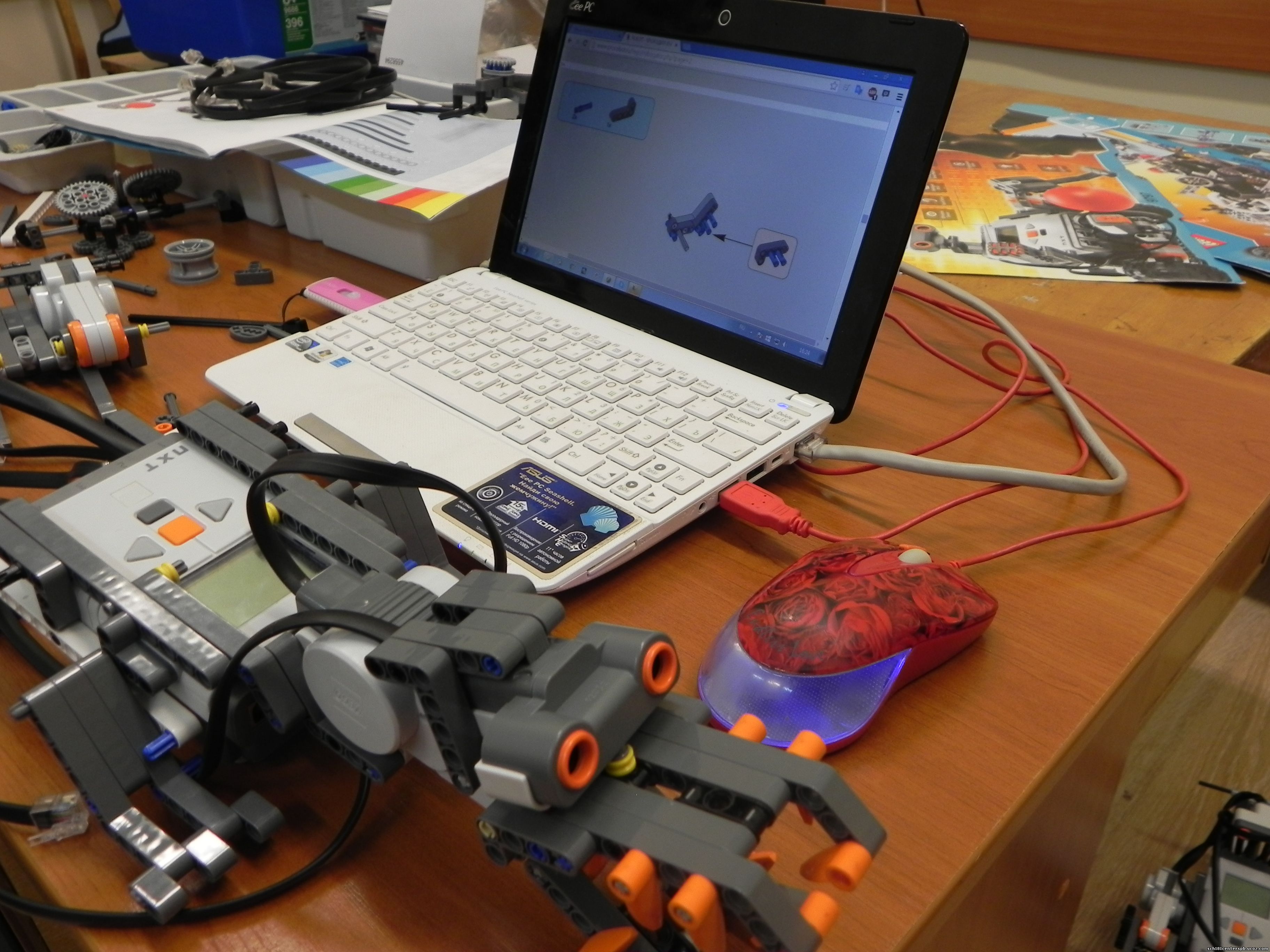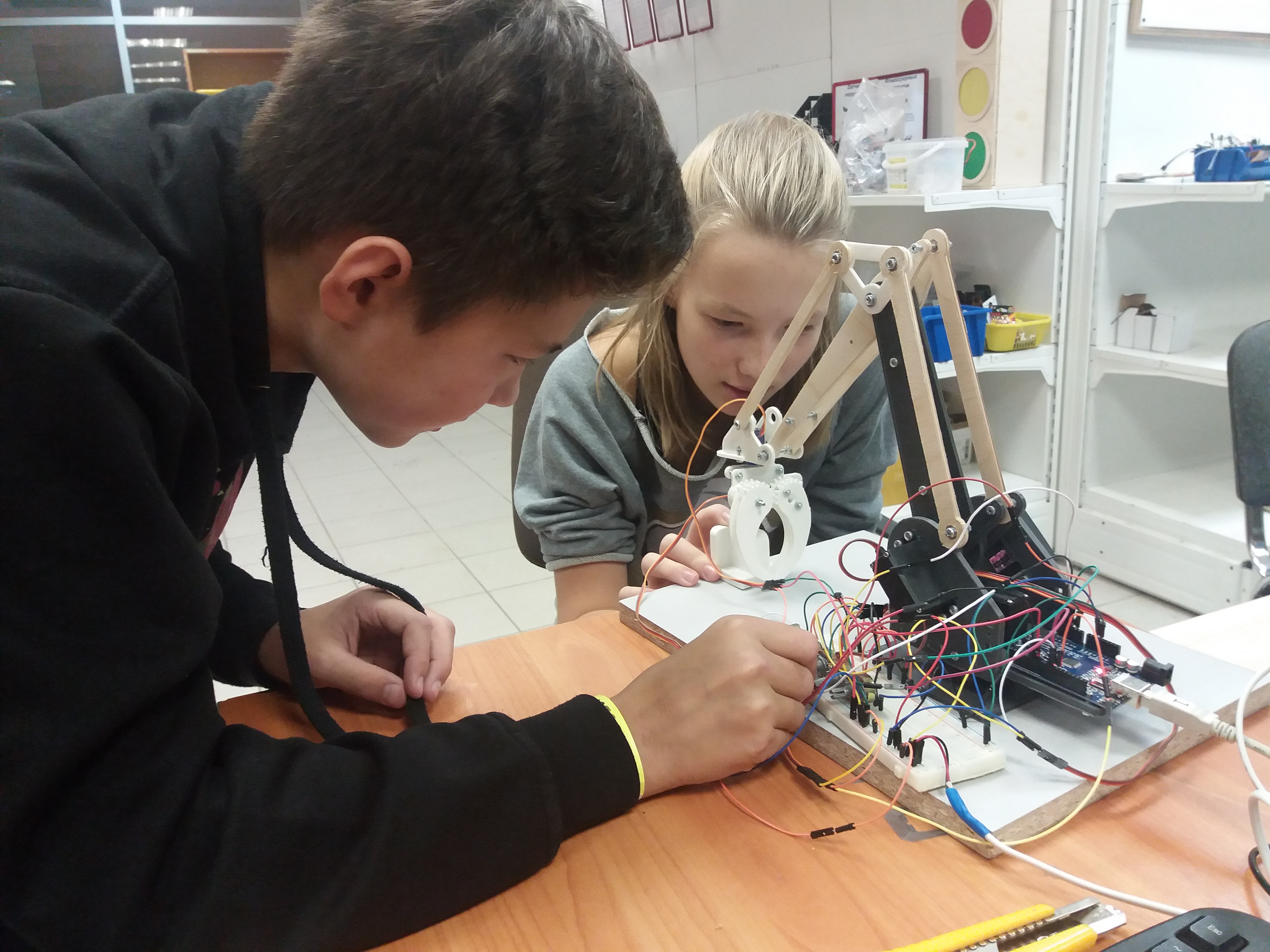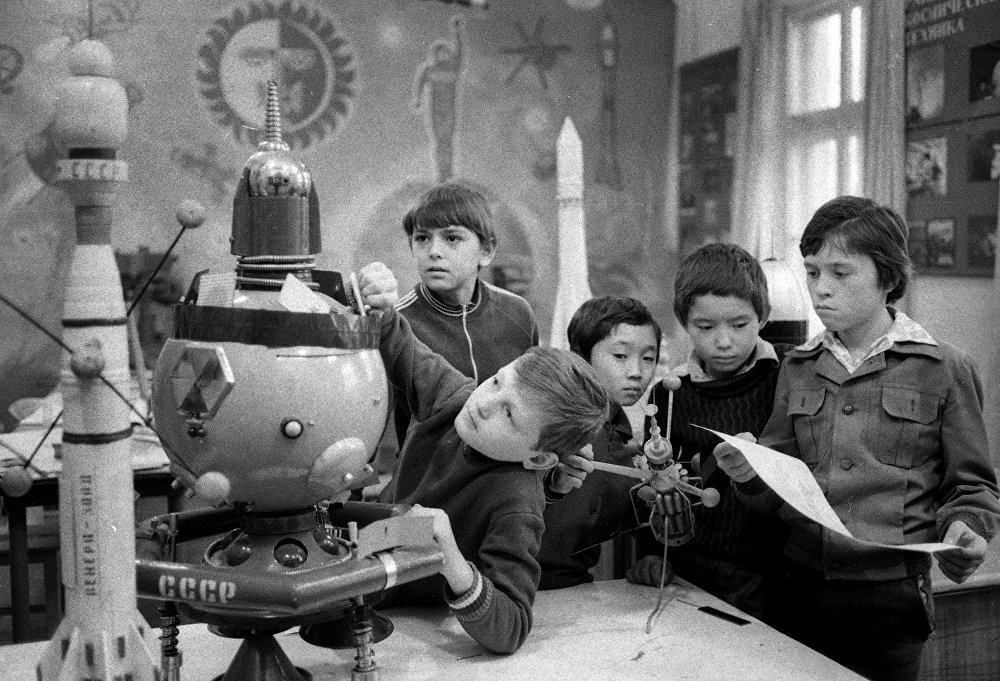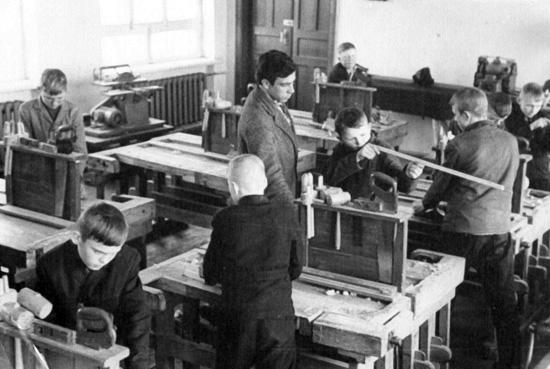Modern children's technical circle VS Soviet SYUTs
The most controversy under such articles arises precisely in comparing the old and the new. Some speak of modern capitalism and the change of dogma and rules in children, others that a whole epoch of education of the children of real engineers died with Soviet circles. Let's try to figure out what the point is.

Of course, modern technical circles in the bulk of the commercial. 80% of them are franchised. 80% of all circles of robotics - at Lego. Education faded into the background. It is undoubtedly one of the three whales of modern circles, but at the head of everything is interactive and children's interest. After all, the main thing in commerce is sales. It is almost impossible to sell an educational course to a modern child, it should be primarily interesting to him. But the parent to sell the educational course for the child is already much easier. Frankenstein was born out of this - there should be elements of education in the course for the child to attend classes, in the course there should be elements of interactive and interest for the child to continue to attend classes. The first should be just enough for the parent to see the undoubted benefit. The second should be as much as possible, it depends on how much the child will go to class with burning eyes and how many people will bring with them in the process.

')
Take for example Lego robotics. Why was she so successful in Russia? It is difficult to find a child who did not have at least one designer in childhood. In my opinion, the interactive there is pumped out just great. The most basic elements of mechanics and logic are also present - the educational process to which parents are going. Robots from Lego constructors are what children go for.

After all, when you say: “We will assemble a robot on a microcontroller, which will find a way out of the labyrinth, put motors on it, sort out the power supply, distance sensors and put all this into a semi-self-made case and make it 2 months,” is one thing. On the other hand: “Already at the first lesson you will assemble a robot on the Lego constructor, which will find a way out of the maze and will program it yourself” - this is quite another. Real statistics - Lego children will go much more eagerly (another question about the age group, Lego goes perfectly for children of 7-10 years old). The ratio of interest in education is perfect. In technical robotics, they tried to twist the ratio in favor of education and utility. Immediately received a response from the market - much less children go to them. In my circles I found a format that can compete with Lego - a technical circle with project activities. About him already told in past articles.
To be honest, I didn’t find them, but I communicated with a hundred good people who went to them. Plus, in the comments to past articles, not a single dozen gathered, telling about how it was before. Therefore, I can well describe the current circles of robotics, I will try to describe the salt of Soviet SYUTs from the stories I have collected in my life. If I miss something, you will certainly correct it in the comments.)

In Soviet times, there was no such thing in circles as interactive. Rather, it ended organically present, but it was far from the main. All were passionate about the same idea, technical progress was developing by leaps and bounds. In technical circles, children felt a commitment to something more than themselves. Understand that the circle provides the foundation for the future profession.
Therefore, practical education came to mind much better. Yes, and to a greater degree the responsibility in making a decision at that moment was not so concentrated in the hands of the parent as it is now. The child himself decided in many respects to walk or not to go to this or that circle. As a result, unbelievable models of aircraft were assembled in aircraft modeling circles. In spite of the fact that there are still aircraft model circles, there are very few of them, but they still exist, they have an interactive rule, and children assemble fast planes (in the sense of quickly assemble - a couple of months maximum), and not those that look incredibly cool. and are going to whole generations.

At the end of the Soviet era, there was not enough materials in the circles, they were made of what they were, but at the time of dawn the technical circle was a paradise for the child. There he received a sea of skills, which he still applies, decades later. Accuracy and responsibility for their work were instilled in the child from the first lessons. Now there is a clear boundary, when a child can be scolded for careless execution and force everything to be redone. If you cross this border, the child simply throws a circle.
Labor protection rules in children's circles were developed at a height of which modern specifications originated, but in Soviet times each school was equipped with a number of machines on which children were taught to work. And each schoolboy of that time collected his own chair, machined on a lathe, or a spatula handle or a screwdriver. I walked around a dozen modern schools on children's robotics, only 5% still have children working at the machines in the office. The rest of the schools were not able to prepare the machines for the current safety standards, or did not put three phases on them that meet modern standards, or they simply cannot find a trudovik ready to work on these machines. Therefore, the machines are with chopped off wires.

I myself went to school, where we simply rewrote the textbook without any breaks. Whoever rewrites most carefully and draws the most beautiful drawings, he received the top five in works. Physics and laboratory classrooms filled up with equipment. They are provided so well that any commercial circle will be jealous. I am not talking about the equipment that is used in the classroom, it is often in poor condition, but about what is simply stored on the shelves and waiting in the wings to go to the garbage. Once I helped to make repairs in the physics office: racks with equipment were located along the wall, and on top, separately, there was another row of narrow shelves with separate doors from the main ones. So, these doors were painted over with standard white school paint year after year, as a result of which they were tightly sealed. I understood that there was some treasure behind them, so with great effort I opened each one. The equipment there was just a great many, including for several laboratory, suitable for a modern textbook of physics. The rest of the day was spent on persuading the teacher to conduct laboratory on this equipment.
Despite the fact that time has changed and other principles are now operating in circles, I understand that in development we must rely on the foundation of past experience. Soviet SyUTs and modeling circles were something incredible, but their experience is now almost lost. Our children will no longer know what it is. Over the past two years, under my supervision, 12 circles of robotics in Russia have been opened. In total, I advised 30 people on the opening of the circle. I would like to introduce important and successful principles of technical circles of the Soviet era, and I ask for your help. Help from the usual story, as it was before, and links to books and articles, right up to ideas and developments of curricula and joint opening of the technical circle.

Of course, modern technical circles in the bulk of the commercial. 80% of them are franchised. 80% of all circles of robotics - at Lego. Education faded into the background. It is undoubtedly one of the three whales of modern circles, but at the head of everything is interactive and children's interest. After all, the main thing in commerce is sales. It is almost impossible to sell an educational course to a modern child, it should be primarily interesting to him. But the parent to sell the educational course for the child is already much easier. Frankenstein was born out of this - there should be elements of education in the course for the child to attend classes, in the course there should be elements of interactive and interest for the child to continue to attend classes. The first should be just enough for the parent to see the undoubted benefit. The second should be as much as possible, it depends on how much the child will go to class with burning eyes and how many people will bring with them in the process.

')
Take for example Lego robotics. Why was she so successful in Russia? It is difficult to find a child who did not have at least one designer in childhood. In my opinion, the interactive there is pumped out just great. The most basic elements of mechanics and logic are also present - the educational process to which parents are going. Robots from Lego constructors are what children go for.

After all, when you say: “We will assemble a robot on a microcontroller, which will find a way out of the labyrinth, put motors on it, sort out the power supply, distance sensors and put all this into a semi-self-made case and make it 2 months,” is one thing. On the other hand: “Already at the first lesson you will assemble a robot on the Lego constructor, which will find a way out of the maze and will program it yourself” - this is quite another. Real statistics - Lego children will go much more eagerly (another question about the age group, Lego goes perfectly for children of 7-10 years old). The ratio of interest in education is perfect. In technical robotics, they tried to twist the ratio in favor of education and utility. Immediately received a response from the market - much less children go to them. In my circles I found a format that can compete with Lego - a technical circle with project activities. About him already told in past articles.
And what about the technical circles in the Soviet era?
To be honest, I didn’t find them, but I communicated with a hundred good people who went to them. Plus, in the comments to past articles, not a single dozen gathered, telling about how it was before. Therefore, I can well describe the current circles of robotics, I will try to describe the salt of Soviet SYUTs from the stories I have collected in my life. If I miss something, you will certainly correct it in the comments.)

In Soviet times, there was no such thing in circles as interactive. Rather, it ended organically present, but it was far from the main. All were passionate about the same idea, technical progress was developing by leaps and bounds. In technical circles, children felt a commitment to something more than themselves. Understand that the circle provides the foundation for the future profession.
Therefore, practical education came to mind much better. Yes, and to a greater degree the responsibility in making a decision at that moment was not so concentrated in the hands of the parent as it is now. The child himself decided in many respects to walk or not to go to this or that circle. As a result, unbelievable models of aircraft were assembled in aircraft modeling circles. In spite of the fact that there are still aircraft model circles, there are very few of them, but they still exist, they have an interactive rule, and children assemble fast planes (in the sense of quickly assemble - a couple of months maximum), and not those that look incredibly cool. and are going to whole generations.

At the end of the Soviet era, there was not enough materials in the circles, they were made of what they were, but at the time of dawn the technical circle was a paradise for the child. There he received a sea of skills, which he still applies, decades later. Accuracy and responsibility for their work were instilled in the child from the first lessons. Now there is a clear boundary, when a child can be scolded for careless execution and force everything to be redone. If you cross this border, the child simply throws a circle.
Labor protection rules in children's circles were developed at a height of which modern specifications originated, but in Soviet times each school was equipped with a number of machines on which children were taught to work. And each schoolboy of that time collected his own chair, machined on a lathe, or a spatula handle or a screwdriver. I walked around a dozen modern schools on children's robotics, only 5% still have children working at the machines in the office. The rest of the schools were not able to prepare the machines for the current safety standards, or did not put three phases on them that meet modern standards, or they simply cannot find a trudovik ready to work on these machines. Therefore, the machines are with chopped off wires.

I myself went to school, where we simply rewrote the textbook without any breaks. Whoever rewrites most carefully and draws the most beautiful drawings, he received the top five in works. Physics and laboratory classrooms filled up with equipment. They are provided so well that any commercial circle will be jealous. I am not talking about the equipment that is used in the classroom, it is often in poor condition, but about what is simply stored on the shelves and waiting in the wings to go to the garbage. Once I helped to make repairs in the physics office: racks with equipment were located along the wall, and on top, separately, there was another row of narrow shelves with separate doors from the main ones. So, these doors were painted over with standard white school paint year after year, as a result of which they were tightly sealed. I understood that there was some treasure behind them, so with great effort I opened each one. The equipment there was just a great many, including for several laboratory, suitable for a modern textbook of physics. The rest of the day was spent on persuading the teacher to conduct laboratory on this equipment.
What is the meaning of this article?
Despite the fact that time has changed and other principles are now operating in circles, I understand that in development we must rely on the foundation of past experience. Soviet SyUTs and modeling circles were something incredible, but their experience is now almost lost. Our children will no longer know what it is. Over the past two years, under my supervision, 12 circles of robotics in Russia have been opened. In total, I advised 30 people on the opening of the circle. I would like to introduce important and successful principles of technical circles of the Soviet era, and I ask for your help. Help from the usual story, as it was before, and links to books and articles, right up to ideas and developments of curricula and joint opening of the technical circle.
Source: https://habr.com/ru/post/460197/
All Articles